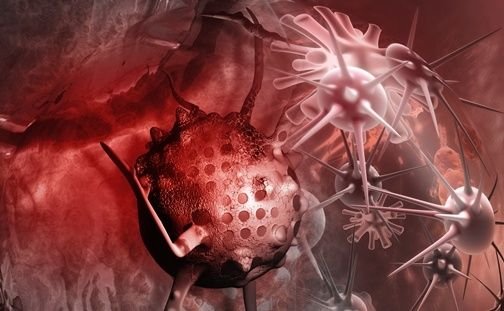
Introduction to Leukemia
What is Leukemia?
Leukemia is a type of cancer that affects the blood and bone marrow. It occurs when the body produces an abnormal amount of white blood cells, which are essential for the immune system. These abnormal white blood cells, known as leukemia cells, do not function properly and crowd out healthy blood cells. As a result, the body’s ability to fight infections and control bleeding is compromised.
Types of Leukemia
There are four main types of leukemia: acute myeloid leukemia (AML), chronic myeloid leukemia (CML), acute lymphoblastic leukemia (ALL), and chronic lymphocytic leukemia (CLL). These types are categorized based on the specific white blood cells they affect and whether they progress rapidly (acute) or slowly (chronic). Each type requires different treatment approaches and has varying prognoses.Leukemia is a serious condition that requires prompt medical attention and individualized care based on the type and stage of the disease. It is essential to work closely with healthcare professionals to determine the most suitable treatment plan.
Causes and Risk Factors
Genetic Factors
Leukemia can be influenced by genetic factors, where certain genetic mutations or abnormalities can increase the risk of developing the disease. These genetic changes can be inherited from parents or occur spontaneously during a person’s lifetime. Individuals with specific genetic predispositions may have a higher likelihood of developing leukemia, highlighting the importance of understanding one’s genetic history for early detection and preventive measures.
Environmental Factors
Environmental factors also play a significant role in the development of leukemia. Exposure to ionizing radiation, certain chemicals like benzene, smoking, and some viruses has been linked to an increased risk of leukemia. Proximity to industrial sites or toxic substances can also impact an individual’s susceptibility to the disease. Maintaining a clean and healthy environment, avoiding exposure to harmful chemicals, and adopting a healthy lifestyle can help reduce the risk of leukemia associated with environmental factors. Understanding and mitigating both genetic and environmental risk factors are crucial steps in preventing leukemia and promoting overall well-being.
Symptoms of Leukemia
Common Symptoms
Leukemia manifests itself through a variety of symptoms that can be indicative of the disease. Common symptoms often include persistent fatigue, unexplained weight loss, frequent infections, easy bruising or bleeding, and swollen lymph nodes. These signs can be subtle initially but may progressively worsen over time. It is crucial to pay attention to these symptoms and seek medical advice for proper diagnosis and treatment.
Less Common Symptoms
In addition to the common symptoms, leukemia may also present with less common indicators that should not be overlooked. These less common symptoms can include night sweats, bone pain, paleness, shortness of breath, and recurrent nosebleeds. While these signs may not always point directly to leukemia, they should still be addressed by a healthcare professional to rule out any serious underlying conditions. Being aware of both common and less common symptoms of leukemia can aid in early detection and timely intervention, improving the prognosis and quality of life for individuals affected by the disease.
Diagnosis and Staging
Blood Tests
To diagnose leukemia, healthcare providers often start with blood tests. These tests can reveal abnormal levels of white blood cells, red blood cells, or platelets, which may indicate the presence of leukemia. Additionally, blood tests can help determine the specific type of leukemia based on the cell morphology and genetic markers present in the blood sample.
Bone Marrow Biopsy
A bone marrow biopsy is another crucial diagnostic test for leukemia. During this procedure, a small sample of bone marrow is extracted and examined for the presence of leukemia cells. The results can provide valuable information about the extent of the disease, its specific type, and the best course of treatment. Bone marrow biopsies are typically performed in a hospital setting under local anesthesia to minimize discomfort for the patient.Completing the diagnostic process, including blood tests and bone marrow biopsies, is essential for accurately diagnosing leukemia and determining the most effective treatment plan for each individual. Early and accurate diagnosis plays a critical role in improving outcomes and increasing the chances of successful treatment.
Also Read: Chimeric Antigen Receptor T: Understanding CAR T-Cell
Treatment Options
Chemotherapy
Following a confirmed diagnosis of leukemia, healthcare providers often recommend chemotherapy as a standard treatment option. Chemotherapy involves the use of powerful medications to target and destroy leukemia cells in the body. This treatment aims to eradicate cancerous cells, prevent their growth and spread, and induce remission. Chemotherapy may be administered orally, intravenously, or through injections, depending on the type and stage of leukemia. While chemotherapy can cause side effects such as hair loss, fatigue, and nausea, it is a critical component in the fight against leukemia.
Bone Marrow Transplant
In cases where chemotherapy alone may not be sufficient, a bone marrow transplant becomes a viable treatment option. Also known as a stem cell transplant, this procedure involves replacing damaged or diseased bone marrow with healthy stem cells. The healthy stem cells can come from a donor or the patient’s body, depending on the type of transplant. Bone marrow transplants are often recommended for individuals with high-risk leukemia or those who have not responded well to other treatments. This procedure aims to restore healthy blood cell production and help patients achieve long-term remission.
